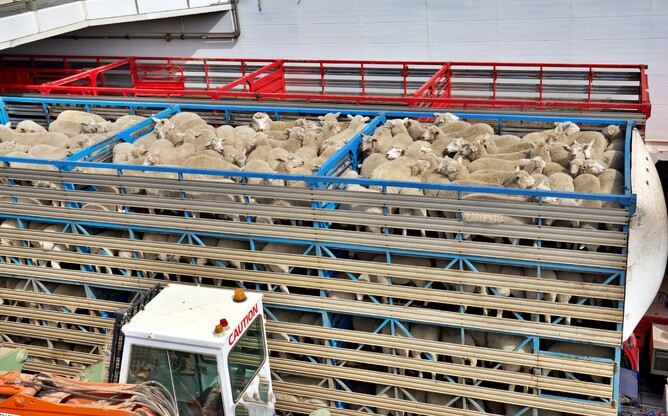Follow these handy checklists to make sure your stock is fit to go on a truck.
As you gear up for weaning, ensuring your lambs and cull ewes are 'fit for transport' is key to protecting their welfare, your farm (and your back pocket)!
It is also important for public health and ensuring a quality product is delivered to market. Ultimately, stock transport rules are in place to protect farmers as much as the animals, supply chain and consumers.
Who is responsible for the condition in which animals arrive at their destination?
Farmers are the main party responsible for ensuring their stock arrive in good condition. Stockmen/truck drivers take some responsibility and, of course, any veterinarian who has provided a fit for transport certificate.
If you are in any doubt about the condition of an animal, don't hesitate to contact your KeyVet for advice, or to get a fit for transport certificate. They can discuss the condition of the animal with you and help to formulate a plan of attack.
Other people who can advise about straightforward cases include stock agents, stock truck drivers and the receiving facility.
You can also download a very useful app, from the Ministry of Primary Industries (MPI), on your phone called “Fit for Transport”.
What is classed as NOT fit for transport?
As you, the farmer, bear ultimate responsibility for safely transporting animals, here is a list of things you should be aware of that would make any stock type NOT fit for transport:
Inflamed or injured udders/active mastitis cases;
Unable to bear weight on all 4 legs;
Being in late pregnancy;
Eye conditions and advanced cancer eye;
Animals in pain or that are obviously sick;
Injuries, open wounds, abscesses;
Very thin or emaciated.
Each stock type also has additional conditions making them unfit for transport, including:
For sheep:
Footrot or scald;
Shearing wounds that are fresh (unhealed), extensive, infected, or deep tissue;
Excessive wool length that could cause heat stress;
Fly strike;
Dog bites;
Within a week of docking or castration.
For deer:
Stags demonstrating over-aggression;
Hinds within 21 days of giving birth;
Fawns and hinds within 10 days of being weaned.
For cattle:
Injured or ingrown horn(s);
Horns that could injure stockmen or other animals;
Within a week of dehorning or disbudding;
Woody tongue and/or photosensitivity lesions;
Tall animals, such as bulls, when no lower deck space is available.
Rules of thumb
When deciding on whether your animals are good to go on a truck, you can use the below rules of thumb:
The animal should be able to travel to its destination and arrive in the same condition as when it got on the truck;
If there is any concern, they should travel to the nearest facility;
Give animals time to recover from illness and injuries before they travel;
If you get advice that you do not trust, seek a second opinion.
We are here to help and work with you, so get in touch if you have any concerns about your stock before loading them onto a truck.


